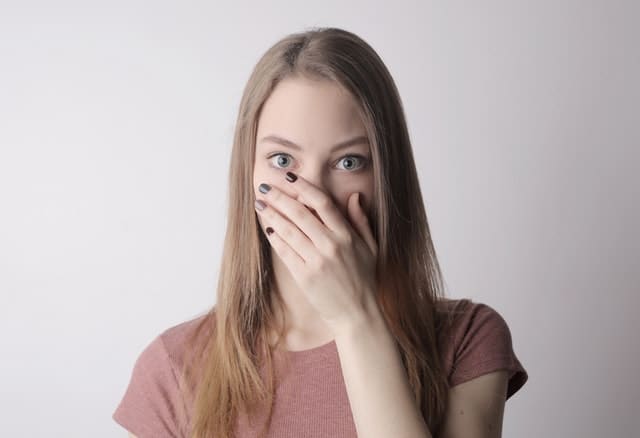What is Social Anxiety? – The truth behind a mental disorder
You enter a room filled with people and immediately feel uncomfortable and your heart starts racing.
Then, you worry that everyone there is judging you and panic at the thought of meeting someone new or striking up a conversation.
Finally, you decide to leave. Does this situation sound familiar to you?
If you constantly feel this way but have always attributed it to excessive shyness, you may be surprised to hear that this may not necessarily be the case.
Instead, you may be suffering from a mental health disorder known as Social Anxiety or Social Phobia.
Social Anxiety Explained
Social anxiety disorder (SAD) is frequently confused with shyness. What most people don’t know is that social anxiety is a type of anxiety disorder, rather than a normal personality trait. It is a mental health disorder that causes persistent fear and anxiety in response to everyday social or performance situations.
For instance, someone with this problem might experience intense discomfort when interacting with strangers or when attending a social gathering.
Because of the complexity of mental health disorders, it is important to rely on a licensed professional for diagnosis and treatment.
When assessing for this disorder, your doctor will likely use a guide on mental disorders known as the Diagnostic and Statistical Manual of Mental Disorders (DSM-V). The DSM-V provides patient criteria for an accurate diagnosis of social anxiety disorder. Some of the most important include (1):
- Intense fear or anxiety about social situations, mainly because the person believes that they will be embarrassed or that their actions will be negatively judged.
- An avoidance or endurance, with severe anxiety, of social situations.
- Signs and symptoms lasting for six months or more.
- An understanding that the fear associated with the condition is excessive.
- The symptoms or behaviors interfere with daily living (e.g. work or social activities).
Physical Signs and Symptoms of Social Anxiety
On top of the behavioral and emotional symptoms, people with social anxiety disorder can often experience physical signs and symptoms related to the pathologic activation of the Autonomic Nervous System (ANS).
These can include an increased heart rate, blushing, trembling, dizziness, sweating, nausea, or an upset stomach. Other physical symptoms can include muscle tension and difficulty breathing.
To understand this, think of the ANS as the mechanism your body uses to protect itself from potential threats.
For instance, picture yourself in front of a wild animal: You should run, right? To help you survive, the ANS activates a fight or flight response, in which it modifies several bodily functions (e.g. heart rate, breathing, and pupillary response).
Now, imagine that your body reacts this way when faced with potential social interactions or situations.
In social anxiety disorder, this happens because, in your brain, the concept of a “dangerous threat” has shifted to include these types of circumstances.
What causes social anxiety?
Like with many other mental health conditions, the cause of social anxiety disorder is still unknown.
It is likely the result of a complex interaction of the predisposition towards the disorder (e.g. genetics, temperament) and environmental factors. For instance, some research suggests that SAD can be inherited since genetic factors can contribute to this disorder.
A child’s environment can also be an important risk factor for the development of SAD: either adverse environments, parent-child interactions, and/or cultural influences can play a role.
For example, there is an association between childhood SAD and parents that exhibit the condition (2). Furthermore, research has established connections between some parenting traits (e.g. overcontrol, rejection) and SAD (3).
Children who have negative experiences in social situations can be more likely to develop SAD (e.g. bullying, ridicule). Similarly, those with specific temperaments (e.g. shy, withdrawn) may have an increased risk (2).
Key Statistics About Social Anxiety
If you suffer from social anxiety you might feel isolated because chances are that the people around you can’t truly understand what you are going through.
Turns out, you are not alone in this at all. According to statistics, many people around the world are feeling the same. In fact, after depression and substance abuse, social anxiety comes in third as one of the most prevalent mental disorders worldwide.
What’s more, it is currently affecting at least 10 million people in the United States.
According to the National Comorbidity Survey (NCS)- Replication study, it is estimated that 12.1% of adults and 9% of adolescents in the U.S. will experience this mental disorder at some point in their lifetime.
Furthermore, in the general population, females are almost twice as likely to develop a social anxiety disorder than men. Finally, this disease generally begins during childhood, at about age 10 years, or in early adolescence (4).
Treatment of Social Anxiety
Contrary to many people’s beliefs, social phobia does not have to be a life sentence. Like many other anxiety disorders, it can improve with medication, psychotherapy, or both.
However, it is up to a licensed health professional to determine the best approach for the needs of each patient.
It has been proven that medication is not a cure for social anxiety disorder. However, it can help relieve most symptoms after an average of 4 weeks of treatment.
Common medications prescribed for this disease include antidepressants, anti-anxiety drugs, and beta-blockers.
A more effective approach for the treatment of this disorder is Cognitive Behavioral Therapy (CBT).
Unlike other types of psychotherapy, instead of dwelling on past experiences, CBT centers on making a connection between the negative thoughts underlying anxiety disorders and the associated behavior.
By changing these unhelpful patterns of thought, it can improve the way that patients react to anxiety-producing situations.
Prognosis: Managing expectations
Predicting the course of social anxiety can be difficult from person to person.
It can be influenced by many factors: age, social phobia characteristics, associated psychiatric disorders, environment, etc (5).
In general, for people with a mild disorder, the prognosis is usually good. Conversely, social phobia can have a chronic course if associated with severe avoidance behaviors or substance abuse (4).
What we do know for sure, is that remission is rare without therapeutic intervention. For instance, if a childhood social anxiety disorder is left untreated, it will likely continue into adulthood.
If you suffer from social anxiety disorder and have been working for a while to get better, don’t give up! Finding the best medication for you can be tricky and it can involve a great deal of trial and error.
Similarly, the benefits of psychotherapy are not immediate and they can take up to several months or years of hard work. With a combination of both, most people with the disorder can learn to manage and even decrease their symptoms in the long run.
Disclaimer
The purpose of this article is entirely educational. This information is not supposed to replace the medical assessment and should not be considered as medical advice.
You should always consult a doctor before taking any supplements and/or medications.
References:
- American Psychiatric Association. (2013). Diagnostic and statistical manual of mental disorders (5th ed.).
- Bögels, S. M., & Perotti, E. C. (2011). Does Father Know Best? A Formal Model of the Paternal Influence on Childhood Social Anxiety. Journal of child and family studies, 20(2), 171–181. https://doi.org/10.1007/
- Brook, C. A., & Schmidt, L. A. (2008, February). Social anxiety disorder: a review of environmental risk factors. Neuropsychiatric disease and treatment. https://www.ncbi.nlm.nih.gov/pmc/articles/
- Bernstein, B. E. (2021, May 26). Social Phobia. Medscape. https://emedicine.medscape.com/article/
- Vriends, N., Becker, E. S., Meyer, A., Williams, S. L., Lutz, R., & Margraf, J. (2007). Recovery from a social phobia in the community and its predictors: Data from a longitudinal epidemiological study. Journal of Anxiety Disorders, 21(3), 320–337. https://doi.org/10.1016/
See Also
Shortness of Breath and Anxiety

Dr. Mera focuses on the use of evidence-based medicine for the care of his patients.
He is an experienced medical writer with over 60 articles available online. Accredited by the AHA (American Heart Association) as a Certified Provider in Advanced Cardiac Life Support.
